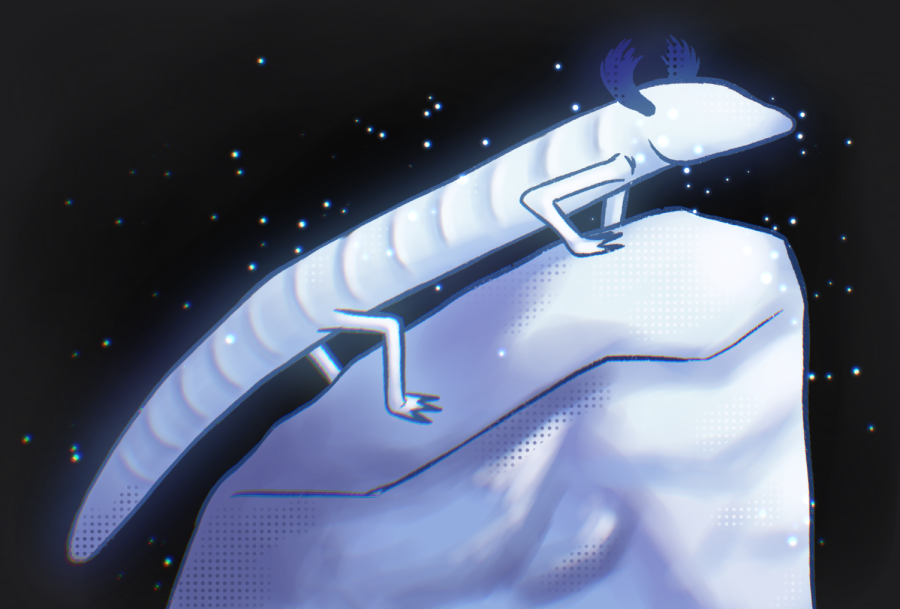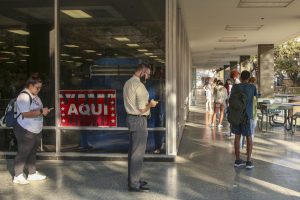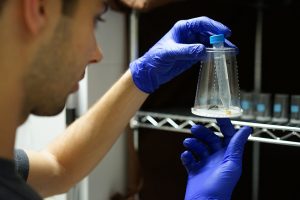UT, San Antonio Zoo partner to detect aquifer wildlife
October 2, 2022
UT has partnered with the San Antonio Zoo to detect multiple endangered aquatic species in the Edwards Aquifer using advanced DNA sequencing and analysis.
The main researchers, Andy Gluesenkamp and Dean Hendrickson nicknamed the project “The Search for Satan,” named after the widemouth blindcat, an eyeless catfish whose scientific name is Satan eurystomus. Satan is one of several animals the mission focuses on. The others include a blindcat named Trogloglanis pattersoni, the Texas blind salamander and the famous Blanco blind salamander.
Gluesenkamp said he met Hendrickson while attending graduate school at UT. Hendrickson was his mentor and took him on one of his first caving expeditions in 1998. The two men have been friends and colleagues ever since. Gluesenkamp, now Director of Conservation at the San Antonio Zoo, has held a long interest in the Blanco blind salamander.
“It’s something of my Moby Dick,” Gluesenkamp said. “It’s a fitting analogy … it’s just a massive animal; a big, white salamander.”
Gluesenkamp confirmed that the salamander was first and last discovered in the Edwards Aquifer about 71 years ago. Hendrickson, Curator of Ichthyology at the UT Biodiversity Center, said it is unclear how many salamanders or blind cats remain in the aquifer.
“Trogloglanis (pattersoni) is still occasionally collected. Satan eurystomus, the other one, hasn’t been collected since 1984,” Hendrickson said. “We’re just trying to, at this point, figure out if they are still down there in the aquifer.”
Both Gluesenkamp and Hendrickson agree that renewed interest in the Edwards Aquifer is attributed to the innovation of environmental DNA sequencing.
“We no longer have to find and capture specimens of these really rare critters,” Hendrickson said. “Every organism is shedding some parts of its body all the time; in the case of aquatic organisms that just goes into the water, and you can filter it out and extract its DNA.”
The team said they can then collect small samples of water and sequence the DNA within and compare the samples to the known relatives of the organisms on file. However, limited files exist for the three specimens.
This method is more effective than the old way of collecting samples, which required large amounts of water to be pumped through a net and wasted, Hendrickson said. Additionally, he said the method, as well as the endangered status of the specimens, often deterred land owners from letting past researchers use wells on their land.
Hendrickson said wells are the main gateway to the aquifer and the water they need for sampling. Getting permission from the well owners is a great challenge for the researchers, Hendrickson said.
“You need to work with private landowners as partners and engage them as stakeholders,” Gluesenkamp said. “It’s their water too.”
Hendrickson said despite the first sampling in the aquifer having taken place a year ago, the project is still in its beginning stages. Preliminary lab testing has proved to be successful, but progress in the actual aquifer has been slow going, he said. This is mostly due to a small data pool and the long process of obtaining permission from landowners, said Gluesenkamp.
“We’re just working on trying to get a dot on a map,” Gluesenkamp said. “It is my hope that our data will serve as a baseline of future studies … that would be a huge win for me.”














